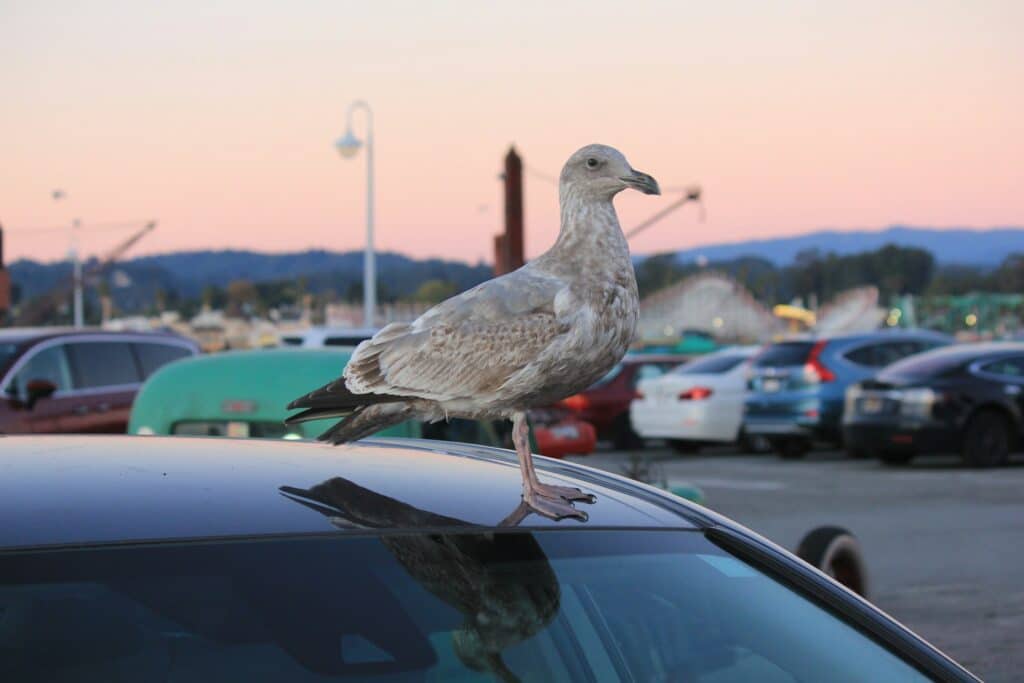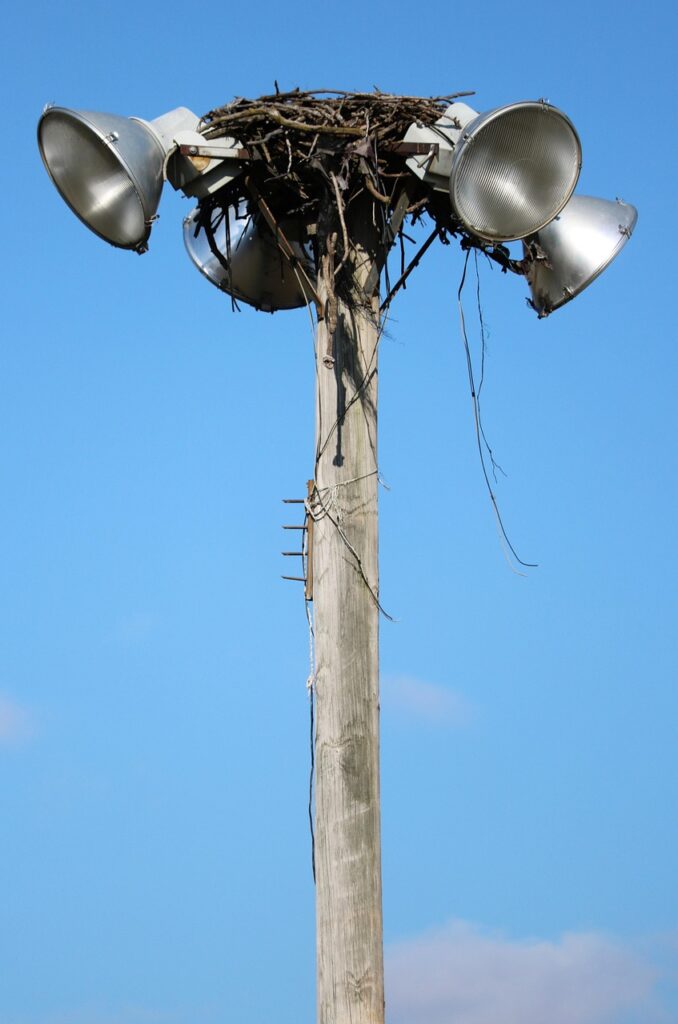Why are the birds here? It is always about resources. For birds, as with other animals, their activities at any point in time are related to securing resources for survival. We must expand the standard needs list of “food, water, and shelter” when considering migration, breeding seasons, weather seasons, etc. Transitions between resources are also a major factor.
Parking lots can be a big attractant to birds and receive a lot of attention from the public who frequent these spaces. A typical parking lot scene includes the hard driving/parking surface, landscaped curbing, light poles, signs, trees, and retention ponds. Additionally, adjacent building’s rooftops and facades should be considered part of the immediate parking lot environment.
Each of these features can play a role in the species of birds attracted to the space.
The Most Common Birds in Parking Lots
Common bird species which infest parking lots in larger numbers include:
- Seagulls
- Geese
- Pigeons
- Grackles
- Crows
Seagulls are usually on site either in search of the food dropped by people or utilizing the building rooftops as a secure nesting surface.
Large numbers of geese are usually seasonal flocks congregating in and around parking lot retention ponds. Some geese are considered residents who do not migrate, and they are commonly found nesting in landscaping by entry doors and sometimes on rooftops.
Pigeons are resident birds and unlike most other bird species, pigeons will breed multiple times throughout the year. They will be found on the parking lot surface scavenging for food and taking advantage of signage, building facades and rooftop, which offer roosting and nesting opportunities.
Great-tailed grackles and crows are often only noticed when in larger flocks but will show up like clockwork each year as they migrate. They may stay on the site for a few days or weeks and can number in the thousands. They favor the taller trees, light fixtures, and signage in parking lots as nighttime roosting areas, though will hang out during daytime hours if close to food.
What Causes Bird Problems in a Parking Lot?

Destruction of habitat, or rather development of land, is regularly the scapegoat for new bird problems. This may be the case at times. More often, we see bird populations increase as the human population in an area increases. Birds are highly adaptable and use our man-made structures and unnatural agriculture practices to their advantage.
In our grand human fashion, we spend a lot of time and money attempting to solve the problems we cause, and bird infestations are no exception. We tend to act responsively to bird problems, though we are seeing a growing interest in proactive bird management investments with both new construction builds and existing properties.
Bird Control in Parking Lots

Since most birds (except pigeons, starlings, and sparrows) are protected under the Migratory Bird Treaty Act, methods to control these pest infestations are limited. Within the parking lot environment, the most successful control measures are more related to the area we are attempting to control the birds versus the type of birds.
For instance, when birds are roosting on the light poles in a parking lot, special bird deterrent cones can be fabricated to deny all bird species the ability to land there. Same goes for on top of signs and ledges on buildings. Bird electric track is a good low-profile option that can be powered with standard 110-volt electrical outlets or a solar panel with a battery. No bird species will tolerate electric sensations delivered by the bird track. Other non-electric options to minimize bird activity on elevated surfaces are bird wire (a post and spring-tensioned wire system) and gel discs (multi-sensory deterrent). In general, installation is simple, though it regularly requires the use of boom and scissor lifts.
Lasers for Large Flocks of Birds
Bird flocks roosting in the landscaping trees or nesting on the rooftops are more challenging (recent news of hundreds of birds in a Texas parking lot). The scheduled use of a powerful bird deterrent laser has proven successful in many bird situations where more traditional deterrent methods were unrealistic to install or there is a need to keep the birds off expansive spaces. These bird deterrent programs can be designed around handheld lasers, which require man-hours to operate, or automated laser systems. Each has pros and cons to be considered for the specific site.
Bird Control on the Ground
When pest birds are on the ground, and in the case of parking lots, this means on the driving surface or the landscaping, only the most restricted bird control methods can be employed. At this level, we must consider the interaction with people. Customers, employees, vendors, etc., will all “get in the way,” if you will.
When controlling birds where people will be, we must first consider human safety and then consider the human experience.
- We cannot install gel discs on a walkway railing where people may put their hands into the tacking gel.
- We cannot operate the laser where it may come into contact with someone’s eyes.
Habitat Modification for Bird Control
Bird control on the ground is challenging. If often takes cooperation with the property owner to practice better operational hygiene habits. This may mean changing out the parking lot garbage cans at shorter intervals, so food matter does not build up and fall out onto the parking lot. It might mean removing the outside eating tables if they are not an integral part of the business model.
Aside from housekeeping suggestions, specific bird control products to control birds on the ground, such as geese, can include the application of liquid or granular products designed to present an unfavorable taste or feeling when ingested or inhaled.
There are too many variables to consider with each bird situation to be able to point to a singular solution and often a mix of methods will yield the best control results. A good first step is to consult an expert in bird control who can start you off with good recommendations and provide guidance on taking the DIY path or hiring a professional.